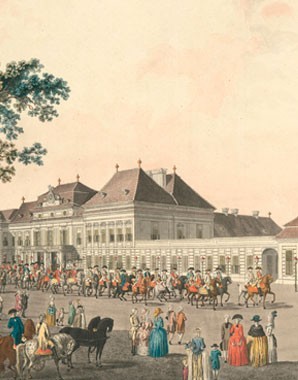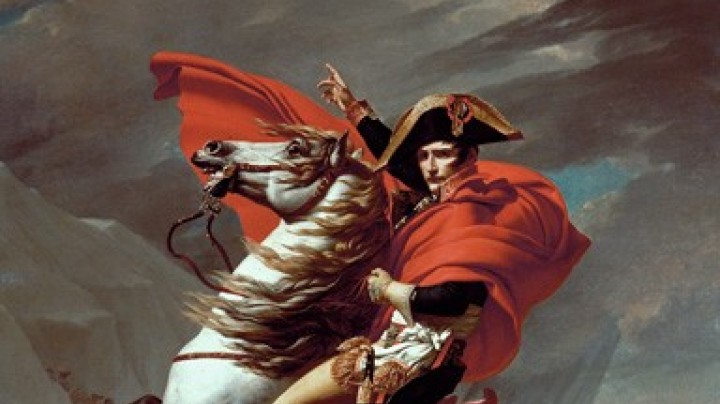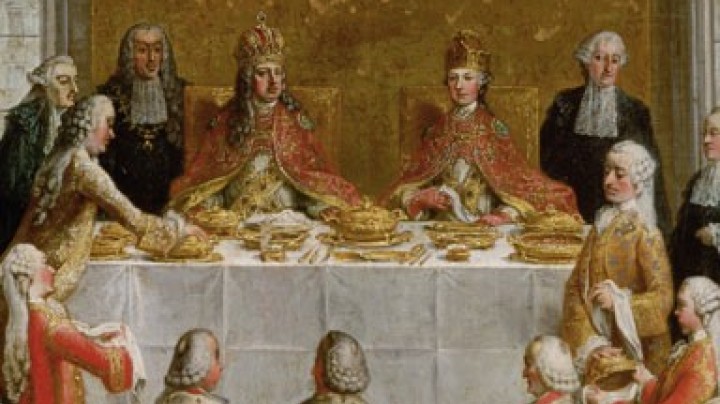Private insights
The ‘good emperor’ Franz II (I) liked to project an image as the ‘first citizen’ of his state – portraitists obliged by painting him and his family in appropriately bourgeois settings.
Carl Buel paid tribute to the monarch’s tireless work ethic in his poem Des Kaisers Arbeitsstätte (The Emperor’s Workplace).While the children slumber / He stays awake; / To ward off / The oppressive yoke of unease!
The trend towards large family portraits under Maria Theresa marked the end of the formal stately portrait of the Baroque era. It was not until after the Congress of Vienna in 1815 and the restoration of the old spheres of influence in Europe that such features began to appear again in rulers’ portraits. Friedrich von Amerling’s 1832 portrait of Emperor Franz II (I) renders the ageing monarch seated on his throne with astonishing realism. The artist emphasizes the ruler’s physiognomy, revealing his careworn features, while the setting and attention to detail recall the formal Baroque portrait.
The idea of monarchical authority having been challenged by the Enlightenment, Franz II (I) took the notion of the patriarchal family as the basis for his concept of rulership, a construct that was influenced by ‘middle-class’ values. This postulated the father, in accordance with the ‘natural order’, as the head of his family, and in a wider sense, the emperor as the ‘father’ of his people. In keeping with these ideas, women were again reduced to their ‘natural’ reproductive function and were also depicted as such, as is clearly demonstrated by the example of the Lorraine Hall in the Franzensburg at Laxenburg.
As the ‘bourgeois’ emperor and ‘first citizen’ of his state, Franz was fond of having himself depicted surrounded by his family. These images offered an ostensibly private insight into the life of the ruling family, deliberately breaking with the aura of aloof inaccessibility conveyed by official state portraits.
Central to the ‘middle-class’ representation of the ruler were the images that showed him as the monarch working tirelessly for the benefit of his people.


















